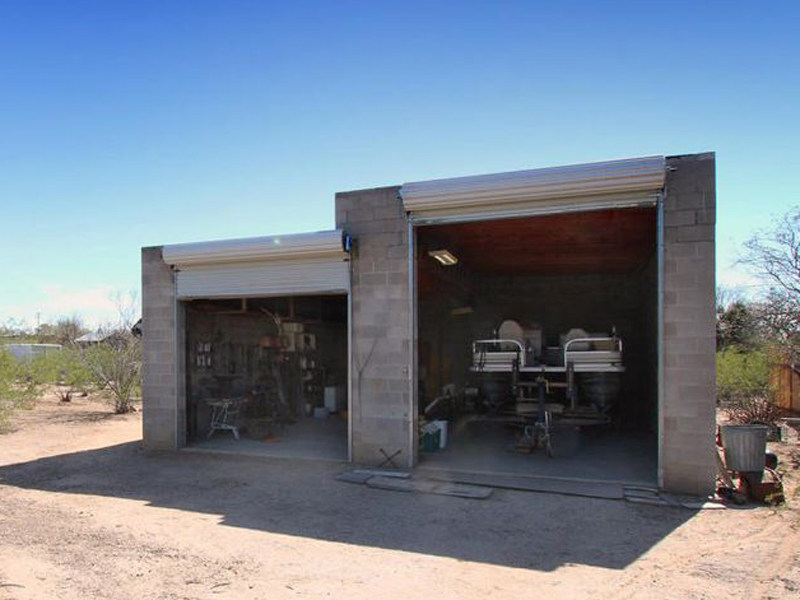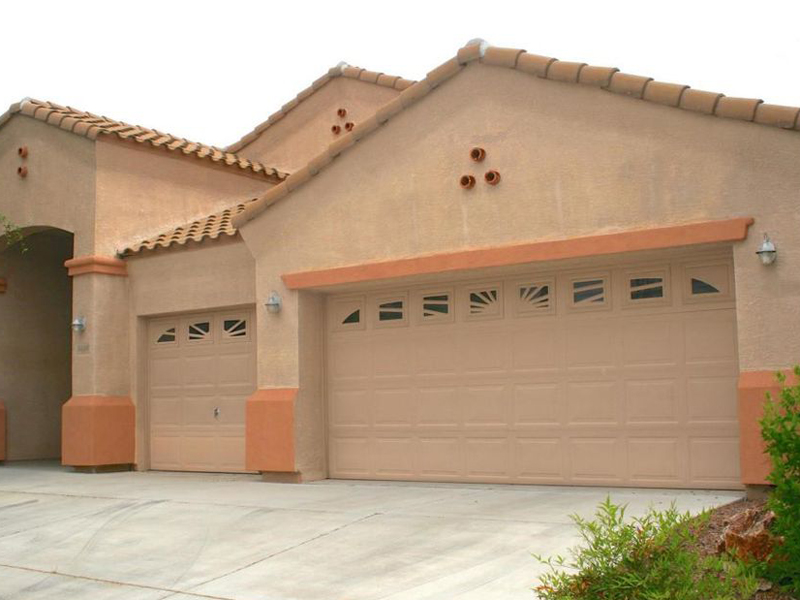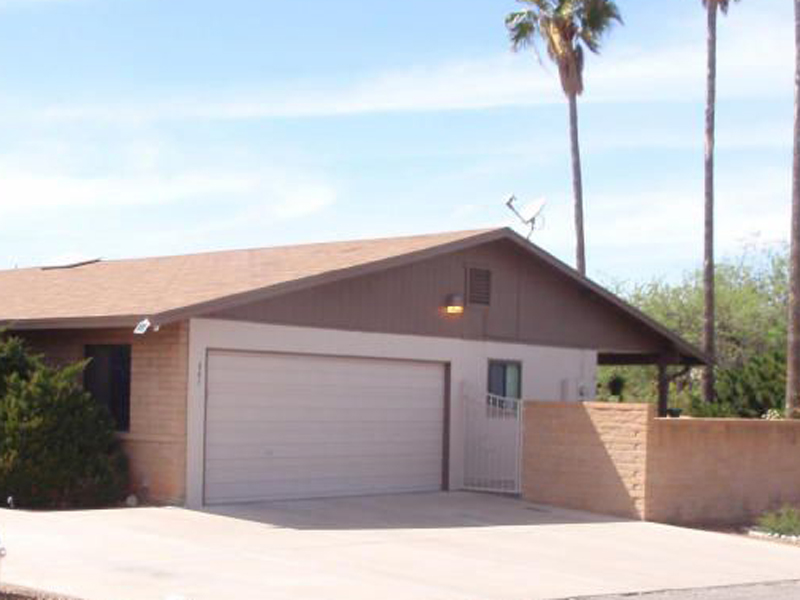Is Your Garage Door Stuck? Right here's What to Do Very first
When your garage door won't open up, start with these essential safety checks before attempting any kind of repair work. Initially, guarantee no person is standing near the door and that lorries are clear of the opening. Seek noticeable indicators of damages like broken panels, curved tracks, or hanging wires. If you see a snapped springtime or seriously harmed elements, quit immediately and call an expert—-- these repair services require specific devices and proficiency to handle securely.

Examine These 6 Points Prior To Calling a Specialist
Before assuming you require pricey fixings, go through this fast diagnostic list that addresses most garage door troubles:
-
Power source: Confirm the opener is connected in and the outlet is functioning
-
Remote batteries: Replace dead batteries in your remote
-
Hand-operated lock: Inspect if someone inadvertently engaged the hands-on lock
-
Blockages: Try to find particles blocking the door's course or sensing units
-
Emergency launch: Ensure the red emergency cord hasn't been drawn
-
Circuit breaker: Validate the garage circuit hasn't tripped
These straightforward checks settle around 70% of garage door concerns without requiring expert intervention.
10 Usual Factors Your Garage Door Will Not Open Up
Understanding why your garage door opener isn't working assists you select the best service. Below are one of the most constant reasons property owners encounter:
Dead remote batteries stand for the simplest solution—-- when batteries pass away, the remote can not send signals to the opener. Power interruptions or tripped breakers reduced electrical power to the electric motor. Busted springs prevent the door from raising effectively and require instant expert focus. Sensing unit misalignment reasons security systems to block door procedure. Track blockages stop rollers from moving efficiently. Electric motor overload triggers automated shutoffs when the opener detects resistance. Restriction switch problems confuse the opener about door position. Cord damage interferes with the training mechanism. Weather-related problems impact door movement throughout severe temperatures. Component wear from age gradually minimizes system efficiency.
Issue # 1: Dead Remote Batteries
When your wall switch functions yet your remote does not, dead batteries are normally the offender. Most garage door remotes use either 3-volt lithium or 12-volt alkaline batteries. Get rid of the back cover of your remote and inspect the battery kind. Change with fresh batteries and test the remote. If it still does not function, you might require to reprogram it to your opener. Consult your opener's handbook for particular reprogramming directions, as the process differs by producer.
Problem # 2: Power Supply Issues
Garage door power troubles frequently stem from loose connections or tripped circuits. Inspect that the opener is securely linked into its outlet—-- vibration can loosen connections with time. Examine the outlet with another tool to verify it's functioning. Analyze your home's breaker box for stumbled circuits, specifically if you have actually experienced tornados or power variations. GFCI outlets may have tripped and require resetting. If the opener has power but will not react, the concern likely lies in other places in the system.
Issue # 3: Broken or Damaged Springs
Broken garage door springs are amongst one of the most dangerous elements to manage. If you hear a loud bang from your garage or discover the door feels exceptionally hefty when attempting to raise by hand, a spring has likely broken. Torsion springs run flat above the door, while expansion springs sit on either side. Never attempt spring repair work yourself—-- these elements save significant stress that can trigger severe injury or fatality. Professional replacement typically sets you back $150-$300 but guarantees your safety and security.
Trouble # 4: Blocked Security Sensors
Modern garage doors include safety and security sensors that stop closure when things are spotted. These sensing units can quit the door from opening up if they're filthy, misaligned, or blocked by particles. Tidy sensor lenses with a soft fabric and ensure nothing blocks the invisible light beam between them. Check that sensing units are effectively straightened—-- many have indicator lights that reveal connection status. Sensing unit issues frequently fix with easy cleaning and change.
Trouble # 5: Track Obstructions or Damage
Garage door tracks guide rollers as the door moves up and down. Dust, debris, old grease, or tiny objects can jam the system. Evaluate tracks aesthetically and eliminate any blockages with a brush or towel. Try to find damages, flexes, or bending that could hinder smooth operation. Small track changes are feasible for helpful home owners, but considerable damage requires specialist repair work to avoid further issues or safety threats.
Trouble # 6: Garage Door Opener Motor Issues
When the garage door motor runs yet the door doesn't relocate, several concerns could be liable. The motor may be overwhelmed and shutting off as a precaution. Equipment wear, specifically in older systems, can prevent correct operation. Chain or belt drive problems affect power transmission. If you hear unusual grinding, clicking, or humming noises, stop making use of the opener instantly. Motor repair work commonly cost greater than replacement, specifically for units over ten years old.
Step-by-Step DIY Troubleshooting Overview
Follow this organized approach to garage door repairing while emergency garage door repair services available 24/7 prioritizing security throughout the procedure:
Action 1: Examine the wall surface switch first. If it works but the remote doesn't, concentrate on remote issues. If neither jobs, examine power supply.
Action 2: Check out the hand-operated release cable. If it's been pulled, the opener is disengaged from the door. Press the trolley back to reconnect.
Action 3: By hand check the door by disengaging the opener and trying to raise the door by hand. It needs to move smoothly and remain in place when half-open.
Step 4: Inspect noticeable elements for damages, paying special focus to springtimes, cords, and tracks.
Tip 5: Check all safety and security features including sensing units, limitation buttons, and auto-reverse functions.
Action 6: Test various controls (remote, wall surface switch, keypad) to isolate the trouble resource.
Always use safety glasses and work gloves when carrying out inspections, and never effort fixings on springtimes or high-tension elements.
When to Call a Professional vs. do it yourself Solutions

Knowing when to call a garage door specialist versus attempting do it yourself fixings safeguards both your safety and your pocketbook. Take care of these issues yourself: dead remote batteries, power supply problems, minor track cleansing, sensing unit cleansing and alignment, and standard lubrication.
Never ever try these repair work on your own: springtime replacement or change, cable television fixings, major track realignment, electric circuitry issues, opener motor replacement, or any fixing entailing high-tension elements. Professional specialists have actually specialized tools, training, and insurance policy to deal with harmful repair work safely.
Consider repair service prices versus substitute costs, particularly for doors over 15 years old. Modern garage doors supply far better safety attributes, power efficiency, and integrity than older designs.
Emergency Situation Garage Door Solutions
When you're stuck to a garage door that won't open up and require instant accessibility, follow these emergency situation treatments:
Manual Procedure: Pull the red emergency launch cord to disengage the opener. This enables hand-operated procedure however needs proper method to avoid injury. Raise the door gradually and equally, making use of leg muscles rather than your back. The majority of residential doors consider 100-150 extra pounds, making them convenient for a lot of adults.
Short-lived Fixes: If the door opens up manually but won't keep up, prop it open with sawhorses or clamps—-- never ever use your body or cars as supports. For doors that won't close completely, guarantee the opening is secured if you need to leave.
Emergency Solution: Lots of garage door firms offer 24/7 emergency situation solution for situations entailing safety problems, trapped vehicles, or total system failures. While much more pricey than routine service telephone calls, emergency fixings give immediate services when needed most.
Safety Caution: What NOT to Do
Garage door safety requires recognizing dangerous repair services that should never ever be tried by property owners:
Never try to fix springtimes—-- they save enough power to trigger fatal injuries when they snap or are poorly handled. Don't force a stuck door—-- this can damage the opener, tracks, or door panels, creating more costly problems. Avoid bypassing safety and security features—-- sensing units and auto-reverse systems prevent severe injuries and residential property damage.
Don't neglect strange sounds—-- grinding, scuffing, or banging sounds suggest troubles that worsen gradually. Never make use of the door if wires are frayed or damaged—-- the door can drop unexpectedly. Do not attempt electrical fixings unless you're a certified electrical expert—-- garage door openers utilize both 120V household current and low-voltage control circuits.

Precautionary Upkeep to Avoid Future Problems
Regular garage door upkeep protects against most common troubles and prolongs system life expectancy substantially:
Monthly Tasks: Aesthetic examination of all parts, examining auto-reverse safety features, inspecting and tightening up hardware, and cleaning tracks and sensors.
Quarterly Jobs: Oiling all moving parts with ideal garage door lubricating substance, screening guidebook procedure, and checking weather condition sealing.
Yearly Tasks: Expert evaluation and tune-up, springtime change if needed, and opener maintenance consisting of belt or chain adjustment.
Seasonal Tasks: Getting ready for climate extremes, checking insulation, and changing opener settings for temperature adjustments.
Consistent maintenance prices far less than emergency repair services and guarantees reliable operation year-round.
Garage Door Will Not Open Frequently Asked Questions
Why won't my garage door open with the remote but works with the wall switch?
This normally suggests dead remote batteries, signal interference, or the requirement to reprogram the remote. Inspect batteries initially, then consult your opener guidebook for reprogramming directions.
Can I manually open my garage door if the power is out?
Yes, pull the red emergency release cable to disengage the opener, then raise the door manually. Be planned for the door's full weight and lift with appropriate method to prevent injury.
Exactly how do I recognize if my garage door springtime is damaged?
Indicators consist of a loud bang from the garage, the door feeling extremely hefty when raising manually, noticeable gaps in the springtime coils, or the door only opening a few inches before quiting.
Is it safe to use my garage door if it won't open right?
No, partial procedure suggests mechanical issues that can worsen instantly. Quit utilizing the door and have it inspected by an expert to stop additional damages or injury.
What should I do if my garage door opens up yet will not shut?
Check safety and security sensors for blockages or misalignment, analyze the tracks for particles, and check the auto-reverse function. If these don't resolve the issue, consult a specialist.
How much does it cost to repair a garage door that will not open up?
Prices vary widely depending upon the trouble: battery replacement ($5-$10), professional diagnosis ($50-$100), springtime replacement ($150-$300), or opener substitute ($200-$500).
Can weather influence my garage door's capability to open?
Yes, severe cold can thicken lubes and affect metal elements, while warm can trigger expansion concerns. Many problems solve as temperatures normalize, yet consistent issues may require specialist interest.
Why does my garage door open a few inches then quit?
This usually indicates busted springs, limitation switch problems, or track blockages. The opener's safety attributes stop operation when resistance is detected, avoiding damages to the electric motor or door.
Get Professional Aid for Facility Issues
When do it yourself repairing doesn't fix your garage door troubles, expert service technicians provide the expertise and devices needed for risk-free, enduring fixings. Certified professionals detect issues properly, utilize manufacturer-approved parts, and provide guarantees on their work.
Professional solutions include: detailed system evaluations, springtime and cord substitute, opener repair work and replacement, track placement and replacement, electric troubleshooting, and emergency solution telephone calls.
What to anticipate: ahead of time prices, qualified and insured professionals, same-day service for several repair work, and follow-up upkeep referrals.
Many garage door business use free estimates for significant fixings and can provide instant solutions for immediate troubles influencing home safety or car gain access to.
Getting Your Garage Door Working Again
A garage door that will not open up does not have to spoil your day or damage your budget plan. Beginning with easy troubleshooting steps like inspecting power, replacing batteries, and analyzing for noticeable obstructions. Lots of troubles have quick DIY options that recover regular procedure within minutes.
Nevertheless, acknowledge when specialist aid is required—-- specifically for spring-related problems, electric issues, or facility mechanical failures. Attempting unsafe repair work on your own takes the chance of severe injury and commonly develops more expensive troubles.
Routine maintenance protects against most garage door issues and guarantees reliable procedure for many years ahead. When issues do occur, resolve them quickly to stay clear of more pricey fixings and maintain your home's safety and ease. Whether you require a basic battery replacement or total system overhaul, solutions exist to obtain your garage door functioning smoothly once again.